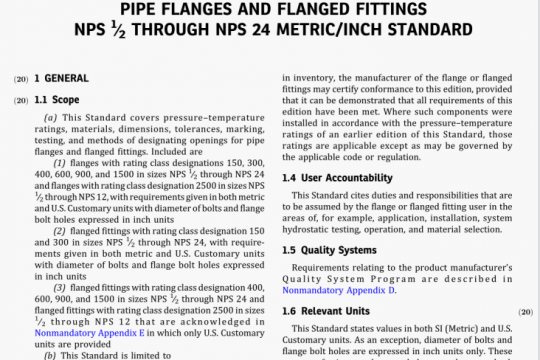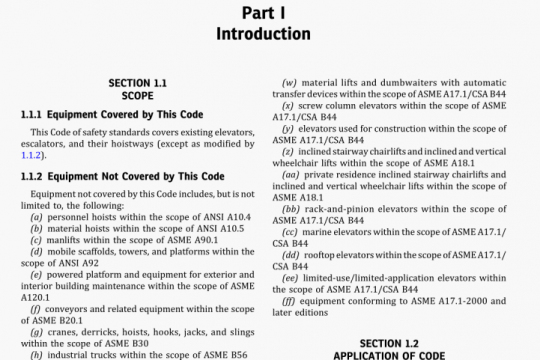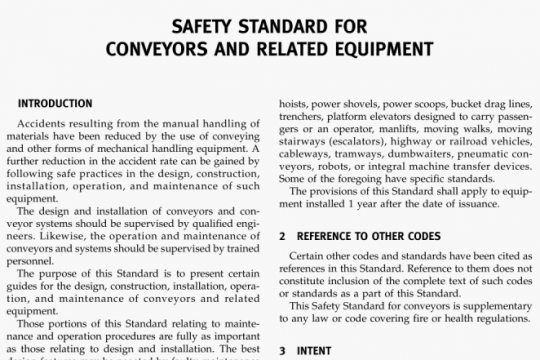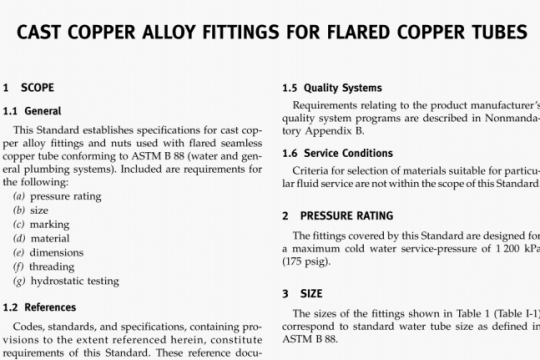ASME EA-1G-2010 pdf free
ASME EA-1G-2010 pdf free.Guidance for ASME EA-1, Energy Assessment for Process Heating Systems.
This guidance document provides an application guide on how to utilize ASME EA-1, Energy Assessment for Process Heating Systems. This guidance document provides background and supporting information to assist in applying the standard.
1.2 LimitatIons
ASME EA-1 does not provide guidance on how to perform a process heating energy assessment, but sets the requirements that need to be performed during the assessment. ASME EA-1 was written in a form suitable for a standard, with concise text and without examples or explanations. This document was developed to be used in conjunction with the standard in order to give basic guidance on how to fulfill the requirements of the standard. This document is only a guide, does not set any new requirements, and ASME EA-1 can used with or without this document.
2.DEFINITIONS assessment: activities undertaken to identify energy performance improvements in a process heating system that consider all components and functions, from energy inputs to the work performed as the result of these inputs. Individual components or subsystems might not be addressed with equal weight, but system assessments shall be sufficiently comprehensive to identifty the major energy efficiency opportunities for improving overall system energy performance. System impact versus individual component characteristics should be discussed.batch furnace: furnace into which the entire workload is introduced periodically.continuous, furnace: furnace into which the workload is introduced continuously or at short time intervals.
energy intensity: the ratio of the energy used during a heating operation to the product unit or mass that absorbs the energy. Also called “specific energy.energy use baseline: amount of energy use measured during the operating conditions existing at the time of the assessment. It should be expressed in terms of energy per unit of production, energy per unit of mass or volume produced or in terms of energy per unit of time. Examples of the base line units are Btu/lb (kWh/kg), Btu/hr (kW), or Btu/ unit of product (widget) (kWh/ unit of product).functional requirement: description of what the plant expects the manufacturing system to do using the heating system. The parameters could be expressed in terms such as production output, quality (insofar as it can be controlled by the heating process), energy consumption (per production unit, if applicable), and emissions.furnace: term generically used in this Standard to describe process heating equipment such as furnaces,melters, ovens, and heaters.
heat balance: a procedure in which an imaginary control boundary is placed around a process heating system and all energies and mass flows crossing that boundary are determined and summed.
maximum installed energy input rate: The maximum amount of energy that can be supplied, usually expressed in such terms as Btu/hr, kW, kCal/hr, and kJ/h. In most cases the maximum installed energy input rating can be obtained from the nameplate of the heating equipment,the operating manual, design drawings, or documents provided by the equipment supplier. In some cases this is known as “connected heat input” or power rating.ASME EA-1G pdf free download.




